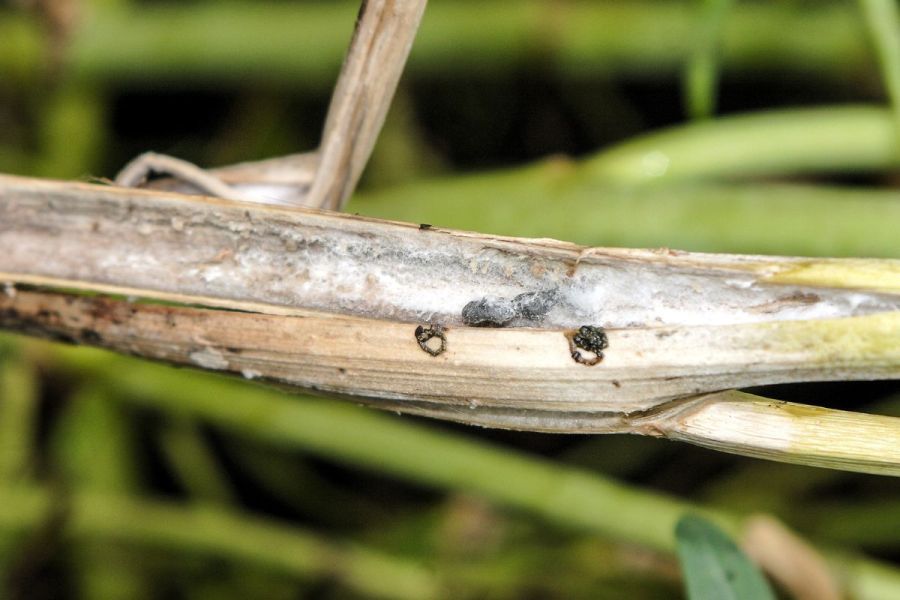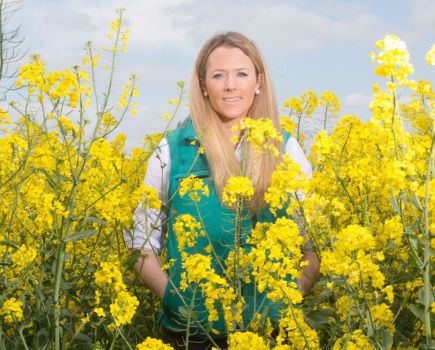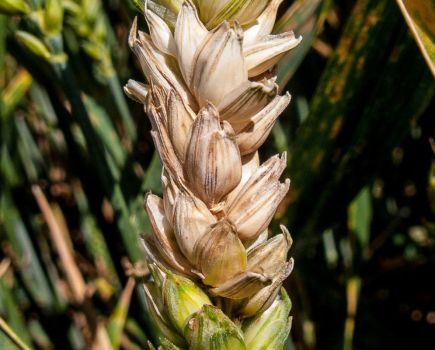Having invested the time and money required to successfully nurture an oilseed rape crop through to flowering, taking an eye off the ball at this stage in the game isn’t an option. CPM investigates the work behind a new management tool to help protect against sclerotinia.
“When a lot of cost has already been built into the crop you don’t want to fail at this stage in proceedings.”
By Janine Adamson
It’s widely acknowledged that the infection cycle of Sclerotinia sclerotiorum is a little complicated. It relies on the simultaneous occurrence of three factors – the presence of sclerotinia inoculum, warm and humid weather conditions, and an oilseed rape crop in flower.
Whereas in the past, some have rested easy in the fact it’s a disease which appears to rarely have an epidemic, the general consensus is it may occur more frequently than is currently realised.
“Localised weather patterns and microclimates within crop canopies make fungicide timings difficult,” raises Openfield’s arable technical manager, Duncan Durno. “Temperatures in the UK are rising and soils are very wet at the moment so there will be a lot of moisture underneath OSR crops.
“Equally, we can still experience high levels of dew right into May which can cause petals to stick to the stems.”
And this is an important point to raise. In spring, when soils are moist and warm (10oC+), sclerotia in the soil germinate, releasing airborne ascospores which land on OSR petals. Sclerotinia then develops as the petals fall and stick to the leaves or stems, assisted by further moisture.
The disease is fed by nutrition from the rotting petals and pollen, allowing penetration of the leaf cuticle resulting in lesions. Then, stem lesions occur as the pathogen spreads which reduces food and water supply to the canopy, induces premature ripening, and weakens stems to cause lodging.
While UK OSR crops are less affected by sclerotinia than those in other parts of Europe, Duncan believes it’s becoming more of a challenge due to the unpredictable climate.
“Ensuring precision in fungicide timings is key because products are protectant rather than eradicants. Missing optimum spray windows due to being unable to travel, plus conducive conditions for the disease, is a real threat,” he stresses.
“Yes sclerotinia comes in late, but this is when a lot of cost has already been built into the crop – you don’t want to fail at this stage in proceedings.”
There’s also the problem of man-power and workloads. “Sclerotinia sprays can coincide when on-farm activity is high and there’s greater pressure on sprayer hours. This again makes it difficult to hit those optimum timings,” says Duncan.
Localised problems occur most years despite 90% of crops receiving a flowering spray, says Limagrain’s oilseeds and pulses product manager, Liam Wilkinson, who agrees that spray windows can be hard to hit.
“Sclerotinia appears to be a greater risk, not just because of the climate, but because cabbage stem flea beetle damage within the crop creates a greater variance in flowering times. Knowing exactly when to target a fungicide spray is becoming more difficult,” he says.
According to Liam, with more diversity in cropping rotations comes a greater risk of the disease. “More than 400 different plant species host sclerotinia including vining peas and faba beans. Mustard is also a host, which is becoming more popular in cover crop mixtures. It may be that in time, sclerotinia becomes a prevalent problem,” he adds.
In recognition of this increasing threat, which can impact OSR yields by at least 30%, Limagrain has made sclerotinia a target in their long-term breeding goals. However, Liam says this can’t come with compromise – varieties have to offer the complete package.
“It’s a balance – unlocking a genetic solution to help control sclerotinia while retaining core traits such as TuYV and pod shatter resistance. We’re strict at sticking to those parameters because our aim is to deliver as much security on farm as possible,” he says.
However, following trials across 15 countries, a new breeding tool has been identified by Limagrain to help combat the disease. Known as Sclero-flex, this new quantitative tolerance to sclerotinia completes the control triangle, joining cultural methods and fungicidal chemistry.
Limagrain’s winter oilseed rape breeder, Coretta Kloeppel, says sclerotinia is a problem that plant breeders have been trying to address for more than 20 years. “The development of Sclero-flex has taken considerable effort and resource from across Limagrain as an international company, with particular involvement from pathology and pre-breeding colleagues in the European team.
“Because sclerotinia is a Europe-wide disease, we used Limagrain’s entire OSR R&D trial network as part of the assessment process, utilising both natural and artificial infection techniques,” she explains.
To ensure robust screening, trials with natural infection took place in geographical regions with high historical sclerotinia pressure, aiming to expose OSR within conventional field conditions. Conversely, for artificial infection, crops were directly inoculated to ensure a consistent and high level of disease infection. Both data sets have contributed to the development of Sclero-flex.
To ensure a variety is indeed Sclero-Flex, it has to be tested for a minimum of three years, applying a two-factor assessment for screening. “We evaluate both sclerotinia severity and incidence, looking for low figures in both criteria. Only then can it be classed as having Sclero-flex,” stresses Coretta.
Of those Limagrain OSR varieties with the new technology, crops have shown an average reduction in sclerotinia incidence of 57% and a reduction in severity of 44%. “As breeders, we believe this is an effective reduction in the disease and therefore a success,” she adds.
But how does Sclero-flex actually work? “Sclero-Flex is based on tolerance of the variety and the ability to reduce the incidence and severity of disease symptoms induced by pathogen infection, compared with a susceptible variety,” explains Coretta.
Then, which according to Coretta is the important part, Sclero-flex is what’s known as quantitative tolerance. “Sclero-flex is the collective result of many smaller genes which all demonstrate tolerance. This ensures a variety will be durable and sustainable and less likely to break down in the future.”
She agrees that this couldn’t come at a cost to the overall variety package on offer. “It’s imperative to maintain all critical traits in a variety – we aim to have it all.”
The focus on developing new traits beyond existing scope has been coined as Limagrain’s seventh generation of hybrids, bringing new maintainer and restorer lines to company’s OSR portfolio. Liam says this has been an integral part of improving stem health attributes.
“We’re bringing varieties to the market which offer a stacked portfolio for stem health, alongside the standard pod shatter, TuYV and RLM7 resistance traits which growers have become accustomed to. By understanding stem health is key to driving consistent OSR yields, our seventh generation of hybrids deliver bigger stems and better rooting, which can result in higher oil content,” he explains.
LG Armada is the first seventh generation hybrid to be released, boasting the new Sclero-flex technology. It’s also the highest yielding OSR variety on the AHDB Recommended List for the UK and East/West.
“Armada is a top-end, elite hybrid variety, but, it’s not a replacement for fungicides. Genetics are complementary and work alongside chemistry as a foundation tool to build in flexibility,” says Liam.
Duncan believes traits play a much greater role in decision making on farm than they used to. “Varietal choice is a more considered decision these days, traits such as disease resistance or tolerance are an important part of integrated crop management.
“Growers are looking for the very best varieties that deliver, and that’s because it’s not easy to grow a good crop of OSR. It takes a lot of investment input-wise, so being able to further secure inherent yield through genetics is a positive step forward,” he says.
Equally, Duncan adds that it’s encouraging to see Sclero-flex has been achieved without compromise on other key attributes. “Building in additional comfort without compromise can only be a good thing,” he concludes.
A deeper dive into Armada will be included in the May issue of CPM.
This article was taken from the latest issue of CPM. Read the article in full here.
For more articles like this, subscribe here.
Sign up for Crop Production Magazine’s FREE e-newsletter here.




